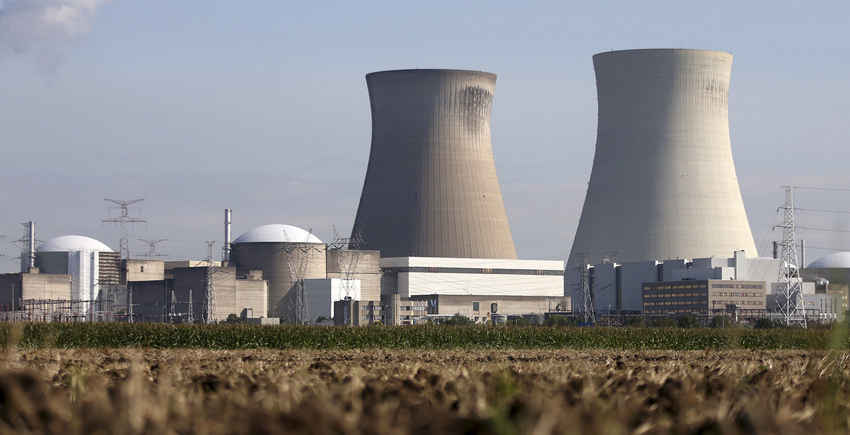
Currently 40% of the world’s total greenhouse gas emissions come from the energy sector and it is therefore clear that if we want to reduce greenhouse gas emissions, the energy sector is an industry that deserves significant attention. Since not all energy sources pollute in the same way, many countries are striving to gradually increase energy production from renewable or ‘green’ sources, in that ecological transition or decarbonisation. In this context, nuclear power is sometimes referred to as a clean source by some, while others more prudently argue the need to use it at least as a ‘transit’ fuel, in parallel with natural gas, in order to then rely entirely on renewables.
For the production of nuclear energy, the mining, transport and processing of uranium produce emissions, as do the long and complex process of building nuclear power plants and demolishing decommissioned sites. Nuclear wastes are perhaps the biggest problem in terms of environmental impact, as they have to be transported and stored under strict conditions and have a yet-to-be-defined long-term environmental impact[1].
On Wednesday 2 February, the European Commission proposed declaring nuclear power and fossil natural gas as ‘sustainable investments’. This calls into question Europe’s climate neutrality and energy transition, and could also increase our dependence on fossil fuel imports, including from Russia. The declared objective of the EU taxonomy, which is a document that determines which sources are green and which are not, is to prevent greenwashing and to help investors identify economic activities in line with our environmental and climate objectives. The taxonomy regulation provides for three types of activities: low carbon (Article 10(1)), transitional (Article 10(2)) and enabling (Article 16). Taking into account this division by type of activity, the Commission includes certain activities in the nuclear and gas sector in the second category of activities, i.e. the transitional activities of the Taxonomy Regulation. According this document, these activities cannot yet be replaced by technologically and economically feasible low-carbon alternatives, but they contribute to climate change mitigation and the transition to a climate-neutral economy in line with the EU’s climate objectives[2].
In order for gas investments to be considered “green”, new power plants will have to replace more polluting plants, producing emissions of less than 270 grams of CO2 per kilowatt hour, although the experts consulted suggested a threshold of 100 grams. In addition, they will have to receive all the necessary authorisations to start operations by 31 December 2030. The regulation also stipulates that the production capacity of new power plants must not exceed 15% of the capacity replaced, must also be compatible with “low-emission gas” and must use “at least 30% renewable [such as biogas or green hydrogen] or low-emission gas from 1 January 2026”, rising to 55% from 2030 and completing the transition by 31 December 2035[3].
Several interest groups claim that atomic energy produces no emissions. One example is the Austrian company Enco, which offered advice to the Dutch government in which it declared that this energy source does not generate CO2 emissions. But the neutrality of such an opinion could be questioned, since Enco was founded by former members of the International Atomic Energy Agency (IEA), and continues to have regular contacts with stakeholders in the sector. On the other hand, during the 2021 UN Climate Change Conference, also known as COP26[4], the Scientists for Future (S4F) research collective has produced a report stating that nuclear power is definitely not carbon neutral[5].
With the acceleration of the climate crisis, nuclear energy and its use in the future have again been called into question. Currently, its share in global electricity production is about 10%. There is much controversy surrounding nuclear power, and many scientists, international organisations, etc., recognise a role for nuclear power in the pursuit of climate neutrality and the end of the fossil fuel era. The experience of nuclear power generation in recent decades shows the considerable technical, economic and social risks involved. Disasters involving the release of radioactive material are always a real possibility, as illustrated by the major accidents at Three Mile Island, Chernobyl and Fukushima[6]. Over the years, countless accidents have occurred wherever nuclear power has been used. Significantly greater reliability cannot be expected from the SMRs (“small modular reactors”) that are currently being designed[7]. There are also the considerable, often unclear, costs of decommissioning nuclear power plants and safely storing radioactive waste. According to many scientific analyses, achieving ambitious climate targets (i.e. global warming between 1.5° and less than 2° Celsius) is possible with renewable energies, which are also considerably cheaper than nuclear power. Since nuclear power plants are also not commercially insurable, the risks inherent in their operation must be borne by society at large. Moreover, current SMRs and so-called Generation IV (non-light water cooled) concepts could be considered technologically immature and far from commercial viability[8].
By classifying fossil fuel gas and an unsustainable and very expensive energy source like nuclear as green energy, the European Commission risks delaying Europe’s energy transition because there are several studies that cast serious doubts on the sustainability of energy production from these two sources.
[1] https://beta.dw.com/en/fact-check-is-nuclear-energy-good-for-the-climate/a-59853315
[2] https://ec.europa.eu/commission/presscorner/detail/en/QANDA_22_712
[3] https://eur-lex.europa.eu/legal-content/EN/TXT/?uri=celex:32020R0852
[4] https://www.un.org/en/climatechange/cop26
[5] Wealer et al. 2021. Diskussionsbeiträge der Scientists for Future 9, doi:10.5281/zenodo.5573719
[6] Wealer, B. Breyer, C., Hennicke, P., Hirsch, H., von Hirschhausen, C., Klafka, P. Kromp-Kolb, H. … Müschen, K. (2021), “Kernenergie und Klima”
[7] Norouzi, Nima, Maryam Fani, and Saeed Talebi. “Exergetic design and analysis of a nuclear SMR reactor tetrageneration (combined water, heat, power, and chemicals) with designed PCM energy storage and a CO2 gas turbine inner cycle.” Nuclear Engineering and Technology 53.2 (2021): 677-687.
[8] Blaise, K. (2021). “Durham nuclear awareness & the Canadian environmental law association”.
By The European Institute for International Law and International Relations.















